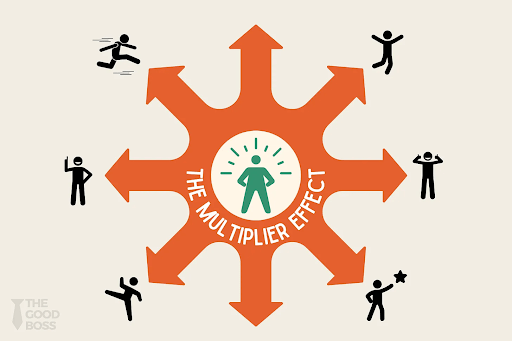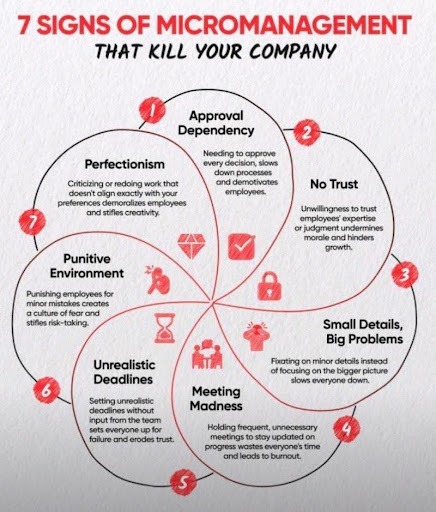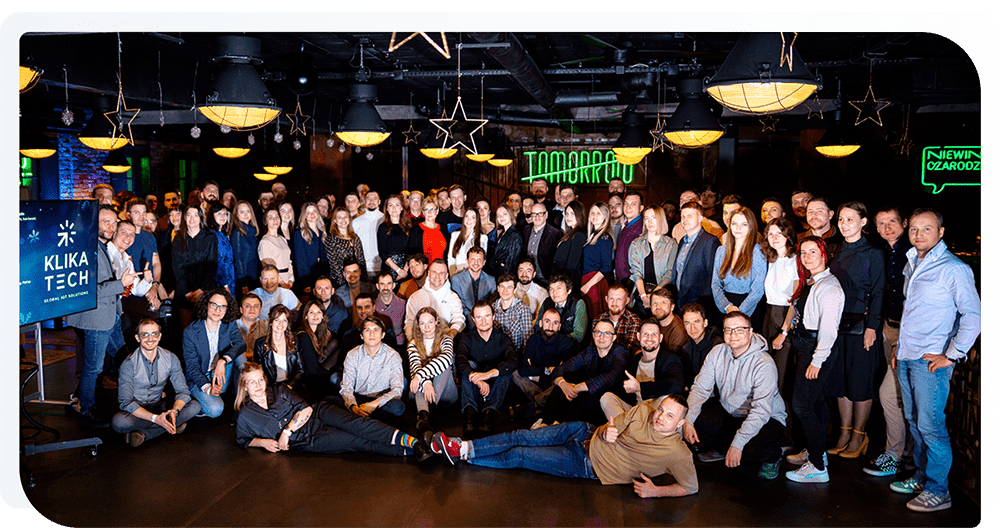
TABLE OF CONTENTS
At Klika Tech, we’ve discovered that empowering people is just as critical as building great technology. Whether we are guiding clients through cloud innovations, IoT accelerators, or AI-driven solutions, one principle holds true: trust fuels excellence. When leaders trust their teams and build the right environment, people don’t simply deliver, they flourish.
This belief is at the heart of what Liz Wiseman calls a Multiplier: a leader who unlocks, rather than suppresses, the brilliance of their team. Multipliers amplify intelligence, creativity, and capability. Their opposites, Diminishers, often unintentionally limit potential. Research shows that Multipliers tap into about 95 percent of their team’s intelligence, while Diminishers often reach less than half. In a business like ours, where innovation is our currency, that difference is enormous. Unlocking collective intelligence isn’t just inspiring; it’s the only way to stay ahead.
What Is a Leadership Multiplier?
Liz Wiseman describes a Multiplier as a leader who unlocks, rather than suppresses, the brilliance of their team. Multipliers amplify intelligence, creativity, and capability. This concept highlights how a leader’s approach can either unlock or constrain the collective intelligence of a team — an insight that sets the stage for the disciplines we explore next. In a business like ours, where innovation is our currency, that difference is enormous. Unlocking collective intelligence isn’t just inspiring; it’s the only way to stay ahead.

These leaders guide through facilitation rather than control. They recognize that their role is not to have every answer but to create the conditions where answers emerge from the collective intelligence of the team.
Why Micromanagement Backfires
The temptation to micromanage is real and often well-intentioned. Leaders want consistency and quality, but the ripple effects can be toxic. Decision-making slows as every choice waits for approval. Accountability erodes because people assume the boss will redo the work anyway. Morale drops, skilled professionals disengage when they feel distrusted, and, most dangerously in a technology-driven industry, innovation stalls when every move is second-guessed.
From my own experience, micromanagement does more than delay progress; it aggravates the team. It creates a subtle but corrosive sense of being under constant control, which drains motivation and saps the confidence that people need to do their best work. Talented developers who should feel trusted start second-guessing every decision, worried that someone is looking over their shoulder.

At the same time, a manager can’t simply step back and disappear. It is essential to maintain enough oversight to answer client and stakeholder questions and to spot risks early. The art lies in striking the balance: staying close enough to understand what is happening without suffocating the people doing the work. That means creating reliable feedback loops and transparent reporting so leaders can see the big picture, while leaving room for the team to own the details.
In fast-moving markets, a delayed product or a hesitant team can mean lost opportunities. Micromanagement isn’t just frustrating; it is expensive and, if left unchecked, it slowly erodes the trust on which high-performing teams depend.
Frameworks That Enable Ownership
Liz Wiseman highlights five disciplines that distinguish true Multipliers, Talent Magnet, Liberator, Challenger, Debate Maker, and Investor, and each of these shows up in the way we work at Klika Tech. We use specific tools and rituals to turn these ideas into everyday practice.
- Talent Magnet: We strengthen our recruiting and onboarding pipelines and use structured mentoring so new hires quickly contribute at a high level. Regular internal tech talks and knowledge-sharing sessions help us spot and grow exceptional talent.
- Liberator: During sprint planning we delegate full workstreams and clarify success criteria. Leaders provide guidance but give engineers freedom in how to achieve results, creating a space that is both safe and demanding.
- Challenger: Retrospectives and technical design reviews are where we deliberately set ambitious goals and challenge each other’s thinking. OKRs are the primary tool here, focusing the team on outcome-driven objectives that stretch everyone beyond their comfort zone.
- Debate Maker: Architecture reviews and cross-team design sessions invite rigorous discussion before key decisions are made. We encourage every voice, from junior developer to solution architect, to surface risks and new ideas.
- Investor: We back our people with resources and trust. For example, team leads own entire feature areas and receive budget and training support to see them through, while leadership provides regular check-ins instead of daily oversight.
These disciplines are not abstract ideals; they are reinforced by the same frameworks that follow, RACI, OKRs, Delegation Levels, decision models and Kanban, each helping us reduce micromanagement and multiply the intelligence of the team.
RACI Matrix clarifies who is Responsible, Accountable, Consulted, and Informed. When everyone knows their role, there is no “shadow ownership.”
OKRs (Objectives & Key Results) focus on outcomes rather than tasks. Instead of saying “complete the dashboard UI by Friday,” we might define the objective as delivering a user-friendly analytics dashboard with key results such as 90 percent positive pilot feedback and sub-two-second load times. The “how” is left to the team.
Delegation Levels from “Do exactly as I say” to “Decide and act” make autonomy explicit. Team members know how much freedom they have, and leaders avoid hovering.
Decision Models such as DACI or RAPID specify who makes the final call and who contributes input, which prevents ambiguity and keeps decisions moving.
Even simple Kanban boards, To Do, In Progress, Done, create transparency and allow leaders to focus on removing blockers rather than directing every step.
These tools are not ends in themselves; they work because they build shared understanding and trust, the bedrock of ownership.
Building a Culture of Ownership Without Micromanagement
Clear expectations are the starting point. Share not just deadlines but the purpose, scope, and measures of success.
Delegate entire workstreams, not just tasks. Instead of “update the UI,” say “lead the design of our healthcare IoT monitoring dashboard from architecture through testing.”
Support through check-ins, not oversight. Weekly one-on-ones are a chance to ask what’s working, where obstacles lie, and how to help, never to redo someone else’s work.
Celebrate accountability and initiative. A simple “thank you for owning the predictive analytics rollout” reinforces the behavior we want to see.
Model ownership yourself. Admit mistakes, share learnings, and show that responsibility starts at the top. When leaders take ownership publicly, teams feel safe to do the same.
And finally, make risk-taking safe and strategic. Encourage experiments with clear fallback options. At Klika Tech, pilots and sandboxes let us explore bold ideas while protecting the business.

Lessons from Our Own Experience
Not long ago, one of our cloud teams was under heavy pressure to deliver a complex energy-management solution for a client. Every increment had to be signed off on before work could continue. The team hit every deadline, but the cost was steep: the relentless approvals and stop-and-go pace left everyone drained and ultimately led to the burnout of two talented developers.
Today, we are working on a new edge-control solution and have taken a very different approach. Each developer now owns an entire section of the system, supported by clear OKRs and regular milestone check-ins instead of constant oversight. The change has been striking. Stress levels are noticeably lower, ideas are surfacing from every corner of the team, and innovation has accelerated. We’ve seen faster problem-solving, tighter collaboration across disciplines, and even a surge of peer-to-peer mentoring as developers share techniques and insights. Most tellingly, the same engineers who once felt overwhelmed now describe the work as energizing and say they look forward to the next challenge.
This contrast has become a touchstone for us: when we give people real ownership and trust them to deliver, the entire organization gains both speed and resilience.
Team Voices on OKRs
Maxim – Edge Computing Solution Architect
“I think we’re already using a variation of the OKR approach,” Maxim explains. “Our tech lead outlines broad objectives, almost like a year-long roadmap, and then helps break them into iterations that act as key results.”
He shares two concrete examples:
For the security stream of development
Objective: Achieve security certification for edge-controller devices.
Key Results: Utilize the TPM module and integrate it with software components; implement component signature verification; and, in the future, add OS image signing and secure boot.
For the Management API
Objective: Implement a centralized management system for edge controllers.
Key Results: Design and implement a proof of concept with simple IAM authentication; add a set of example configuration APIs; implement a plaza association endpoint and integrate it with our Cloud platform; and implement release management through the API.”
Maxim appreciates that the method “makes the direction of the project clear and measurable,” and sees strong advantages: easier scaling as the team grows, less stress when everyone understands the product’s path, and the ability to involve mid-level developers without needing every task decomposed by senior engineers. His only caution is that objectives can be difficult to set when the client’s vision is unclear or when research into new areas requires significant time. “It works best when someone provides a clear product vision,” he notes.
Anton – Senior Backend Software Developer
Anton admits, “so I can’t say we’re fully there yet. We have many objectives and more or less clarified key results, but they aren’t always truly measurable. So, the short answer is we’re only starting to move in that direction.”
Still, he welcomes the concept: “OKRs should eventually give us clear, measurable key results. At the moment our planning feels more like ‘feature-vibe-oriented’: we outline the main ideas of what we plan to deliver and then do a kind of R&D before implementing. Moving toward OKRs could help us tighten that focus.”
Sergey – Backend Software Developer
“From what I see, we are moving toward the OKR approach,” Sergey says. “Right now, our planning in Jira is milestone and epic driven, mainly about delivering features and bug fixes. OKRs focus more on the impact of those features, not just their delivery. If we can connect our epics and releases to higher-level objectives, then we’ll be even closer to fully implementing OKRs.”
He believes the shift will bring value: “It should give us more clarity on why we are delivering something, not just what we are delivering. The main advantage is that it shows shared goals and the bigger picture, not just ‘implement feature A.’ The challenge is that it might feel a bit abstract at first, and we’ll need to map it carefully to our existing Jira processes.”
A Mini Leadership Playbook
From these experiences we can distill a simple playbook:
- Define the Why – Explain why the project matters to the business, not just the technical tasks.
- Clarify Ownership – Use RACI or OKRs to establish who is accountable.
- Establish Feedback Loops – Schedule check-ins at key milestones, not daily control points.
- Create Safety Nets – Encourage experimentation with “safe-to-fail” pilots or sandboxes.
- Celebrate Wins and Learnings – Recognize both successful outcomes and thoughtful failures.
Leaders who follow these steps watch their teams take initiative, deliver faster, and innovate more boldly.
Why This Matters for Klika Tech
When teams feel genuine ownership, innovation rises. Energy, creativity, and responsiveness are exactly what we need to refine our embedded development, cloud, and IoT solutions.

Closing Reflection
Micromanagement shrinks capacity. Multipliers expand it. Every leader faces the same question: are you diminishing or multiplying your team’s potential?
At Klika Tech we have seen first-hand that when leaders embrace ownership and resist the urge to control, innovation thrives. In an industry as dynamic as ours, that difference is more than cultural it is a competitive advantage.
By Mohammad Shirazi, Portfolio Manager, Klika Tech